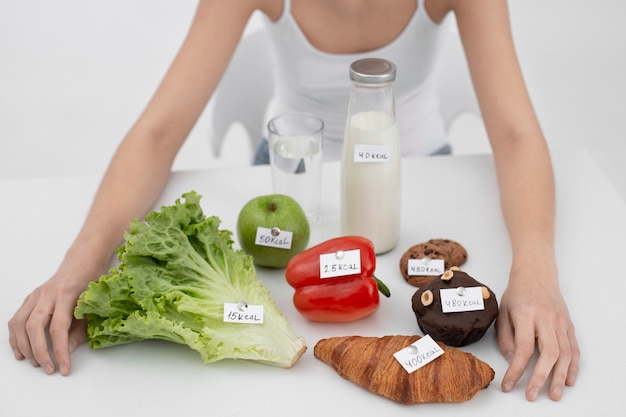
Fungi naturally occur on and in the human body and are usually harmless. However, certain circumstances can cause these fungi to grow uncontrollably, resulting in yeast infections. The most common culprit behind fungal infections is the Candida species, particularly Candida albicans. While it typically causes superficial infections like oral thrush, throat thrush, or vaginal thrush, it can sometimes lead to life-threatening invasive candidiasis.
Candida is part of the human microbiome and resides on mucosal surfaces and the skin without causing harm. However, people with weakened immune systems—such as those with aging-related vulnerabilities, HIV, or undergoing cancer treatments—are at higher risk of recurring yeast infections.
### Understanding Candida Yeast Infections
The Candida yeast includes around 100 species and may be found on the skin, mouth, throat, intestines, and vagina. While normal levels of Candida promote nutrient absorption and digestion, overgrowth can cause infections affecting various regions of the body, such as the vagina, skin, intestines, mouth, or throat. Vaginal yeast infections, or vaginal candidiasis, are widespread, affecting about 75% of women at some point in their lives. These infections often result in itching, swelling, redness, soreness, and in some cases, a burning sensation during urination or sex.
If a yeast infection occurs, it’s crucial to consult a healthcare provider for proper diagnosis and treatment. Besides medical treatment, making certain dietary adjustments can help manage and even prevent yeast infections. Consuming a diet rich in fruits, vegetables, whole grains, and some dairy products can strengthen the body against infections, while avoiding sugar, gluten, alcohol, and certain dairy products helps curb the growth of Candida.
### The Candida Diet
The Candida diet involves cutting out foods that promote yeast growth, such as sugar, gluten, alcohol, and some types of milk, in favor of foods rich in anti-inflammatory properties, healthy fats, and probiotics. Research has shown that high-sugar diets increase the risk of yeast infections, while anti-inflammatory and nutrient-dense foods support a strong immune system and help deter Candida overgrowth.
### Foods to Include and Avoid for Candida Control
1. **Low-Sugar Foods:**
Yeast thrives on sugar and starch, so reducing high-glucose or starchy foods—like rice, white flour, and sugary processed items—can help starve Candida. Instead, focus on low-starch vegetables, nuts, seeds, and healthy fats like oils to create an environment that discourages yeast overgrowth.
2. **Oregano:**
Oregano oil is known for its antifungal and antibacterial properties, effectively targeting Candida albicans. It also promotes gut health by fighting parasites and supporting a healthy digestive system, which may prevent yeast from spreading.
3. **Coriander:**
Coriander seeds and essential oil act as powerful antifungal agents. Coriander is rich in nutrients and is particularly beneficial for treating yeast infections when used in seasoning mixtures or taken as an extract.
4. **Cheese:**
Probiotic-rich cheeses, such as cheddar, mozzarella, and gouda, provide beneficial bacteria that survive stomach acid and reach the gut, reducing Candida levels. Soft cheeses are particularly effective in delivering intact probiotics to the digestive system.
5. **Papaya:**
Papaya seeds and leaves have antifungal properties, and the fruit is rich in vitamin C, which helps address yeast infections. Papaya seed extract has been shown to combat different fungal species, including Candida.
6. **Yogurt:**
Yogurt with active probiotic cultures, such as Lactobacillus, supports the growth of healthy bacteria, which keeps Candida in check. Regular consumption can prevent yeast overgrowth and help manage mild infections.
7. **Virgin Coconut Oil:**
Virgin coconut oil contains antioxidants, vitamins, and fatty acids with antifungal properties, particularly lauric acid, which fights Candida albicans. Incorporating virgin coconut oil into your regular diet can reduce the occurrence of infections.
8. **Curcumin:**
Found in turmeric, curcumin is a natural anti-inflammatory and antioxidant compound. Studies have shown its potential in inhibiting Candida growth, making it useful for yeast infection prevention.
9. **Probiotics:**
Probiotics are beneficial bacteria that help maintain a healthy balance of microorganisms in the body. They can protect against Candida overgrowth, stabilize pH levels, and boost immunity, aiding in both the prevention and treatment of yeast infections. Probiotics can be consumed as supplements, capsules, or in foods like yogurt.
10. **Garlic:**
Garlic contains allicin, an active compound that provides antifungal and antibacterial effects. Adding garlic to your diet helps promote a healthy bacterial balance, preventing yeast from growing uncontrollably.
### Final Thoughts
Incorporating these foods and dietary practices can help manage and prevent recurrent yeast infections. A balanced diet rich in nutrients and probiotics plays a vital role in maintaining a healthy gut and immune system, creating unfavorable conditions for Candida overgrowth. However, for severe or persistent infections, it’s always a good idea to seek advice and treatment from a healthcare professional.